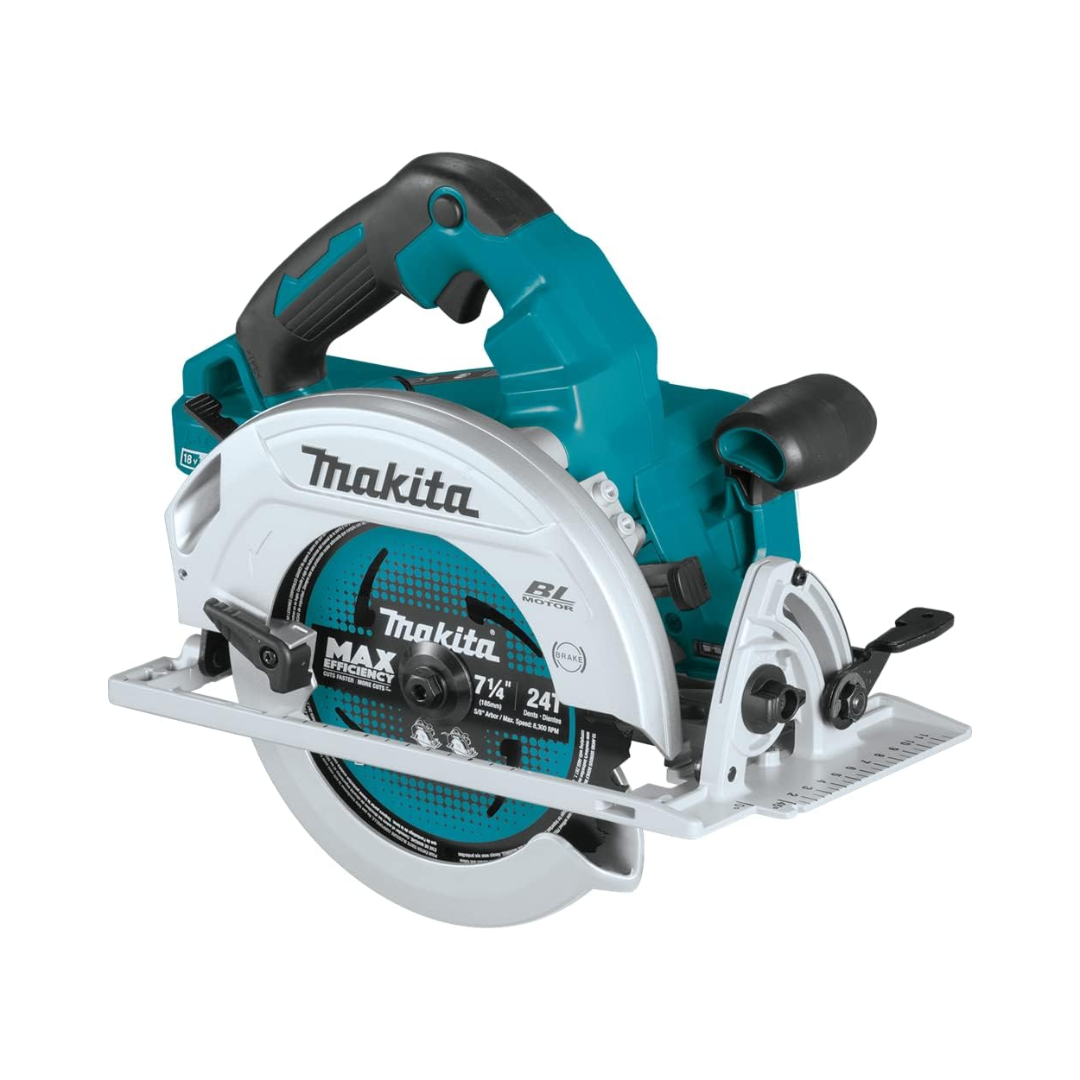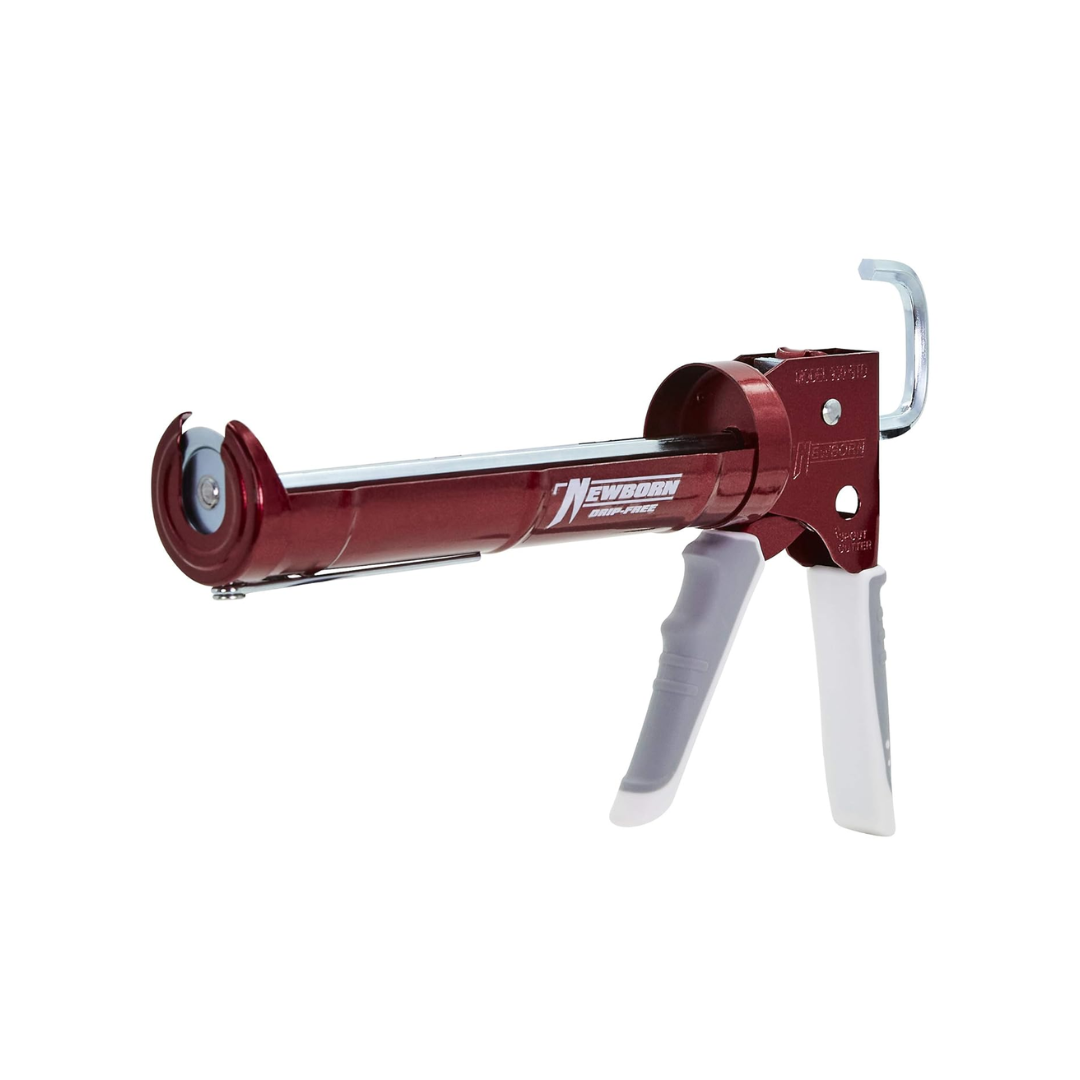We may be compensated if you purchase through links on our website. Our team is committed to delivering honest, objective, and independent reviews on home products and services.
Stone veneers can add a dramatic touch of elegance to a plain wall. This DIY project enables homeowners to achieve the sophisticated look of natural stone without requiring professional masonry skills. In the video above, This Old House senior technical editor Mark Powers explains how to install stone veneer panels, providing a beautiful and durable finish that elevates the appearance of any wall.
What Are Stone Veneer Panels?
Stone veneer panels are thin, lightweight sheets designed to mimic the appearance of natural stone while being easier and cheaper to install than traditional masonry. They can be made from natural stone or from manufactured materials like concrete or resin.
Available in various styles and colors, they can match any design preference while providing a cost-effective alternative to traditional masonry. Additionally, stone veneer panels are durable, weather-resistant, and easy to install, making them a practical choice for many projects.
There are three main types of panels used in this type of project:
- Flat panels: These cover most of the wall surface and feature interlocking tabs for seamless installation.
- Universal corner panels: These have finished edges used to form corners and start each course.
- Starter strips: These plastic supports keep the first course level and properly positioned, providing a solid base for the rest of the installation.
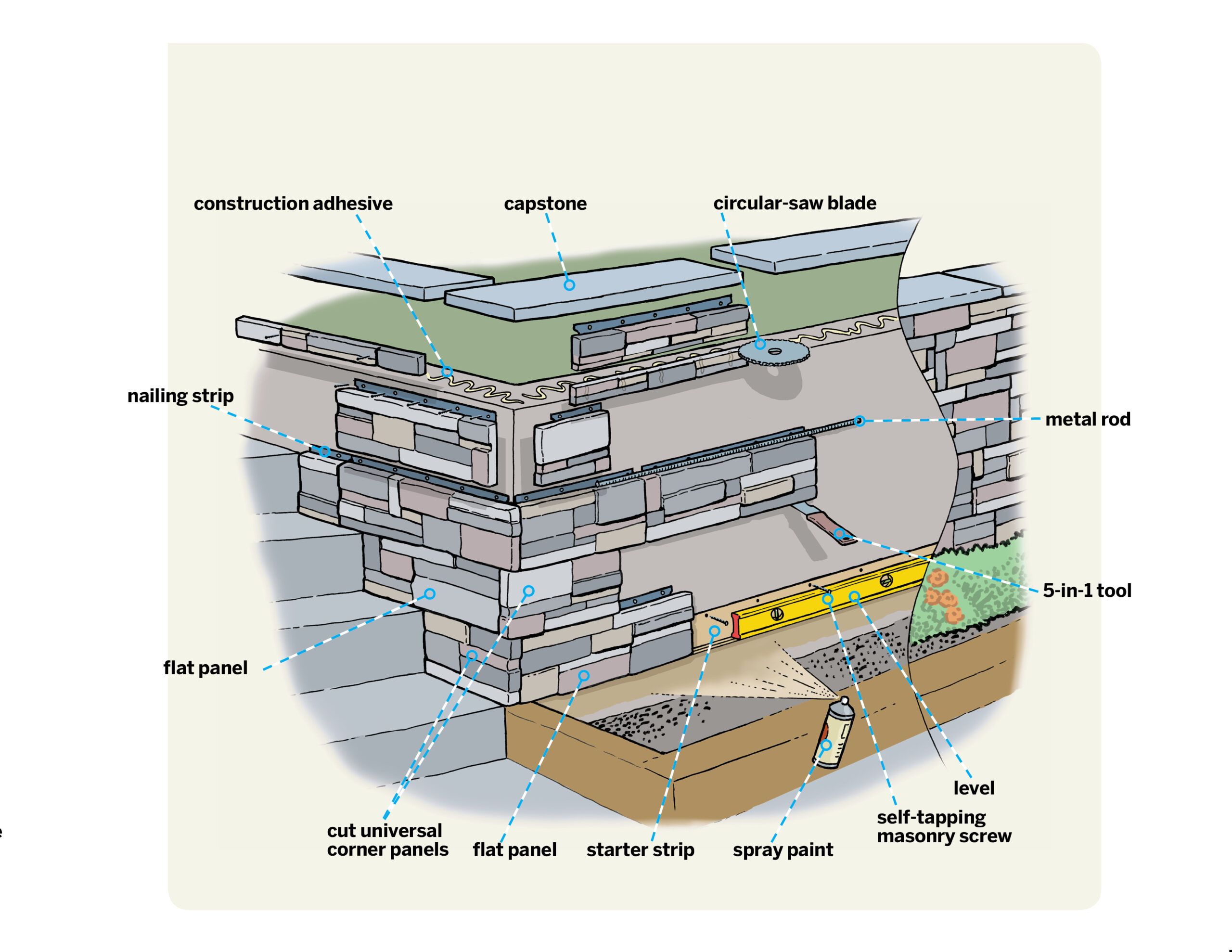
Tools and Materials
To install stone veneer panels on your wall, you’ll need the following tools:
Steps To Clad a Wall in Stone
Here are the step-by-step instructions for cladding a stone wall. The project typically takes two days to complete:
- Day 1: Prepare the site and install the first course (Steps 1–9)
- Day 2: Finish and cap the wall (Steps 10–17)
Step 1: Measure the Wall
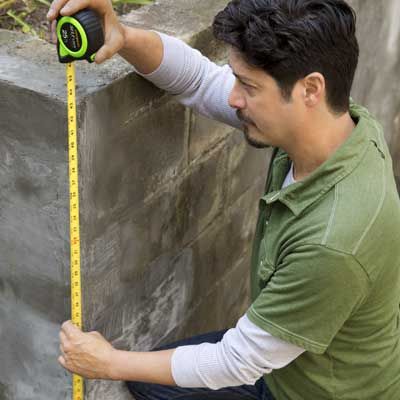
To calculate the number of universal corners to order, measure the height in inches of each outside wall corner, as shown, divide by 16, and round up to the nearest whole number. You’ll fill the area between the corners with flat panels.
To calculate how many of those you’ll need, multiply the wall’s width by its height in feet and divide the resulting area by 2 (each panel covers 2 square feet). Subtract the number of universal corners from the result, then add 10% to your order of flat panels. Add one universal corner to be safe.
Step 2: Paint the Bottom To Prep the Wall
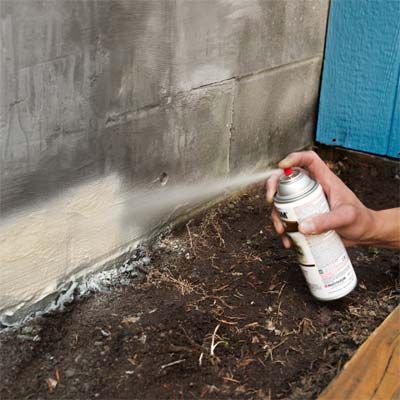
The panels must be installed above ground level, resting on a plastic support called a starter strip, so you’ll want to paint the wall below the strip to match the stone. Find a spray-paint color similar to the palette of your stone panels and paint the bottom few inches of the wall.
Step 3: Install the Starter Strip to Prep the First Course
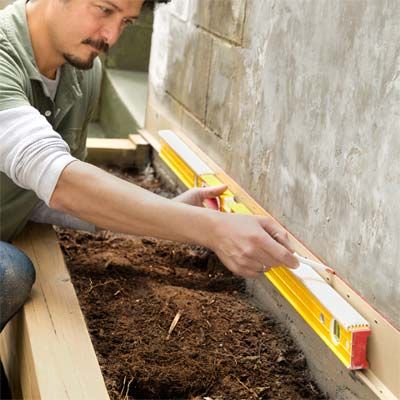
Set the location for the starter strip at least 2 inches above any soil. Here, the strip’s lip aligns with the top of a stair on the adjacent side of the corner. Fit your drill/driver with a 3/16-inch masonry bit and drill a pilot hole through a slot in the strip near the corner and into the wall. Drive in a masonry screw to secure that end, then use the 4-foot level to bring the strip to level and mark a line, as shown. Drill pilot holes and fasten the strip in two or three more spots, maintaining level.
Step 4: Remove the Tab
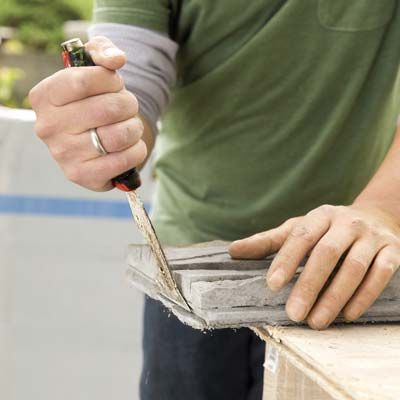
Flat panels have a tab on each side that meshes with slots on adjacent flat panels but needs to be removed from any end that forms a corner. Rest the panel faceup on a work surface and use the blade of the 5-in-1 tool to knock the tab off, as shown. The resulting flat edge will make for a tight corner.
Step 5: Mark the Panel
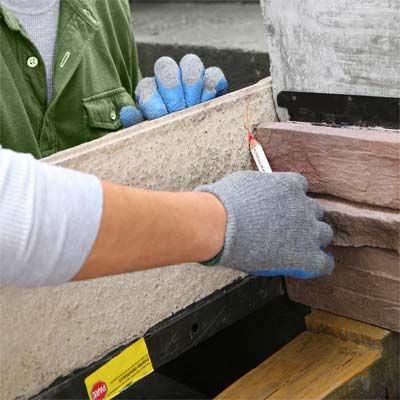
Each run starts at a corner, with the finished end of a universal corner overlapping the end of a flat panel (with the tab removed). First, cut the universal corner into two pieces; the finished edge of each piece starts a course, and the cut edge butts into a flat panel.
For aesthetics, cut the universal corner so that each piece is at least 8 inches long. Or, as in our case, cut it to fit against the stair riser: Rest a flat panel on the adjacent side in the starter strip, then spin the universal corner upside down, butt its finished edge against the stair riser, and scribe a cutline, as shown.
Step 6: Cut to Length
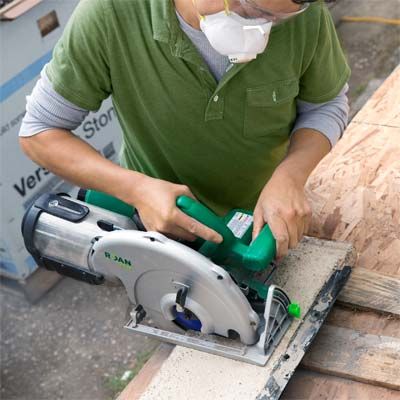
Rest the marked panel facedown on a work surface with scrap boards beneath it on either side of the cutline. Use a straightedge to mark a squared-off cutline along the narrowest point of the scribed line. Fit the circular saw with a segmented diamond blade and cut along the line, going through the concrete and the metal nailing strip. Wear safety glasses, a dust mask, and hearing protection.
Step 7: Fasten the First Panel
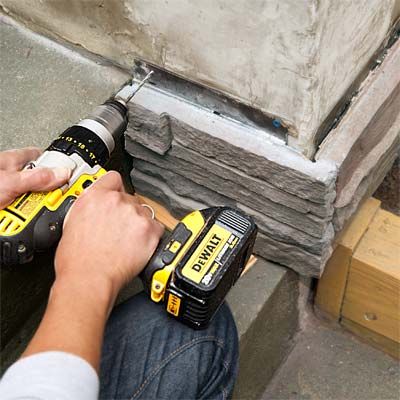
Hold the cut universal corner against the wall, bringing its finished end flush with the face of the adjacent flat panel so that the two pieces form a 90° outside corner. Level the universal corner, and drill pilot holes through the nailing strip, as shown, directly through the metal, if necessary, in at least two places. Fasten the panel with 1 1/4-inch self-tapping masonry screws.
Tip: Keep your bit spinning to remove dust as you back the drill out of the pilot hole, allowing the masonry screw to more easily tap into the concrete.
Step 8: Finish the Run
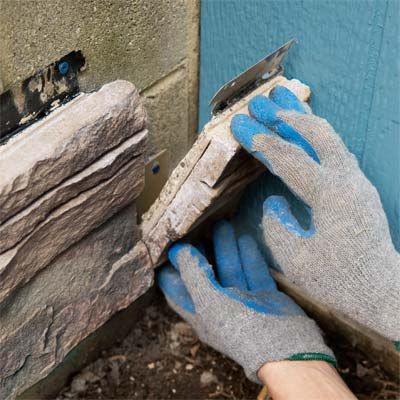
Continue installing full-size flat panels, working your way down the course. When you near the end, measure and cut a partial panel to fill the end of the course. If the cut piece has a tab on either side, use the 5-in-1 tool to knock it off. Fit the piece in place, drill pilot holes, and screw it to the wall.
Step 9: Install the Second Corner
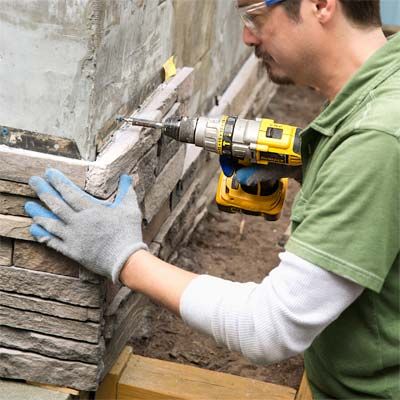
Use the cut half of the universal corner from the first course, positioned on the opposite side of the corner, to stagger the joints. Slip the tongue on its bottom edge into the groove on top of the flat panel beneath. Position a flat panel, with its tab removed, atop the universal corner in the first course. Be sure it’s cut to a different length than the piece beneath to offset the joints across the wall. Mark and drill pilot holes for the universal corner, secure it and install the adjacent flat panel to complete the corner.
Step 10: Align Adjacent Panels

Work along the course, brushing out debris from the top groove to verify that the panels fit together snugly. As you set each new panel, make sure that it’s aligned with the previous panel by nestling a 1/4-inch metal rod in the groove along the top edge. The rod should lie flat and bridge the grooves in adjacent panels. If it doesn’t, use the 5-in-1 tool to shim the panel up or back several screws out of the previous panel and adjust it. When the panels align, drill pilot holes and fasten them to the wall.
Step 11: Stagger the Joints
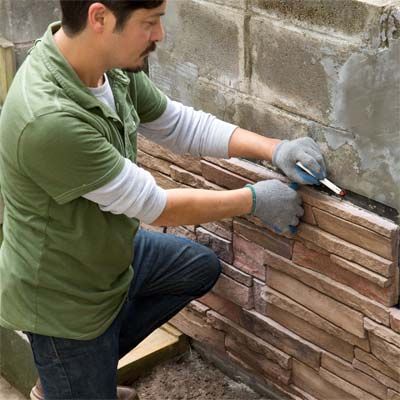
If the end of a panel falls in line with a joint on any of the previous courses, you’ll want to cut down its length slightly to maintain staggered joints. Hold the panel in place and mark the nailing strip at a different length. Transfer the mark to the back of the panel, cut it to size, and fasten it to the wall.
Step 12: Cut Panels To Fit the Top Course

On the final course, you’ll need to cut down the height of the panels to fit, removing the nailing strip so that the stone reaches to the top of the wall. Rest a flat panel in place and scribe a cutline on the back at the height of the wall. Set the panel on a work surface and cut it to the proper height with the circular saw. You may want to cut your corner pieces to length first, then cut them to the proper height, as shown. Dry-fit the two pieces at the corner to check the fit.
Step 13: Glue the Pieces
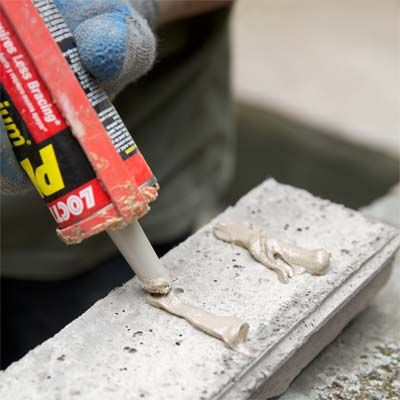
Remove the corner panels and apply straight beads of construction adhesive on the back of each piece in vertical runs, as shown, so that water is free to flow behind the panels and drain properly. Set the panels in place on the wall and adjust them to fit snugly at the corner.
Step 14: Sink the Fasteners
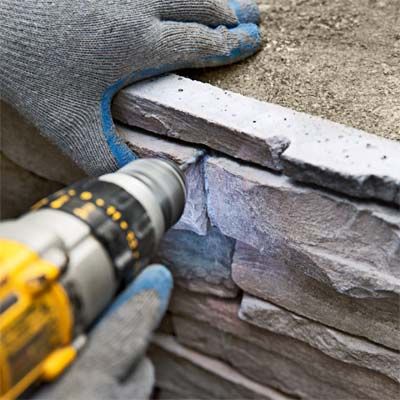
To further secure the cut-down panels, locate several spots on each one where you can sink a fastener inconspicuously in joints between stones. Holding the piece in place, drill a pilot hole through the panel and into the wall. Drive in a masonry screw, sinking the head below the surface of the panel. Cover the screwheads with caulk, gather some dust from the cutting table, and blow it onto the drying caulk to camouflage it. You can touch up any gaps in the same manner. Finish installing the panels in the final course.
Step 15: Cut the Capstones
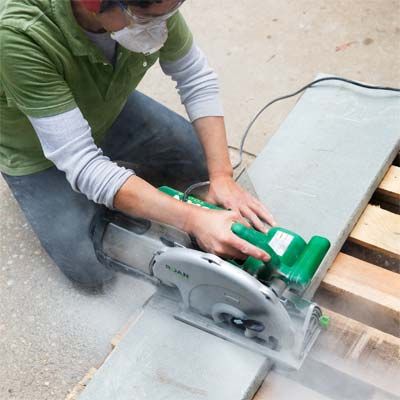
To create an overhang, select a capstone several inches wider than the depth of your clad wall. Measure and mark the capstones to fit along the top of the wall. Use the circular saw and the segmented diamond blade to cut to length, as shown.
Step 16: Set the Stone to Cap the Wall
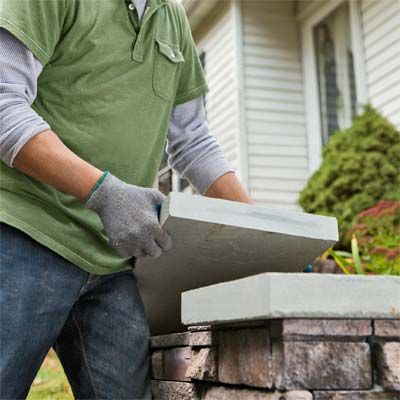
Working with a partner, lift the capstones and dry-fit them on top of the wall. Remove them and apply construction adhesive to the top of the wall and the edges of the veneer before resetting the stones. Alternatively, if you prefer an even more authentic look, set them in a stiff mortar bed.









